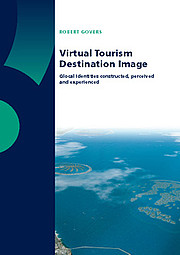Virtual Tourism Destination Image. Glocal identities constructed, perceived and experienced Defended on Thursday, 24 November 2005
The emerging network of global hubs and flows of finance, media, technology and migration has raised awareness regarding the tensions between global and local identities and images. Dubai, as the central research background for this dissertation, is a good case in point. With internet and mobile technology, creating destination image is no longer a one-way ‘push’ process of mass communication, but rather a dynamic one of selecting, reflecting, sharing, and experiencing. This dissertation therefore constructs a dynamic tourism destination image formation model, which identifies a triadic tension between place identity, its projection and the perceived image. This tension is short circuited during the travel experience, when host (supply) meets guest (demand). At this instance, three potential gaps could negatively affect the level of satisfaction experienced in the host – guest encounter. The empirical research focuses on measuring projected and perceived images in order to test the way in which the gaps can be assessed. This is accomplished through an innovative methodology based on computerised content analysis. The projected image is measured through a content analysis of 20 Dubai based websites while the perceived images are gauged by content analysing 1.100 online responses to a qualitative image survey. The results indicate that for Dubai, the three gaps need bridging as there is a clear tension between its rapid development as a global hub and its strong local identity and image. A theoretical solution for bridging the gaps is discussed and conceptually applied in the concluding chapter. It is based on the destination branding literature and establishes the general usefulness of the model and its research methodology.
Keywords
Tourism Destination Image, Place Identities, Projected Image, Perceived Image, Tourism Experience, Destination Branding, Globalisation, Dubai, Content Analysis, Phenomenography







